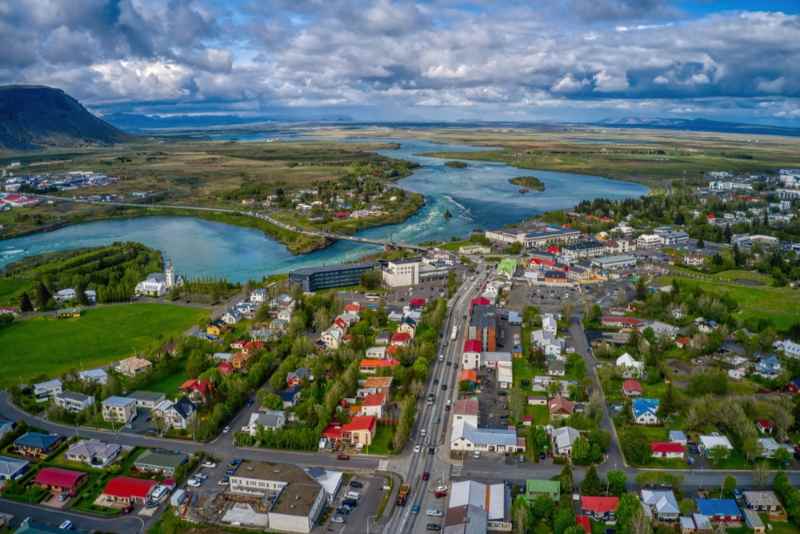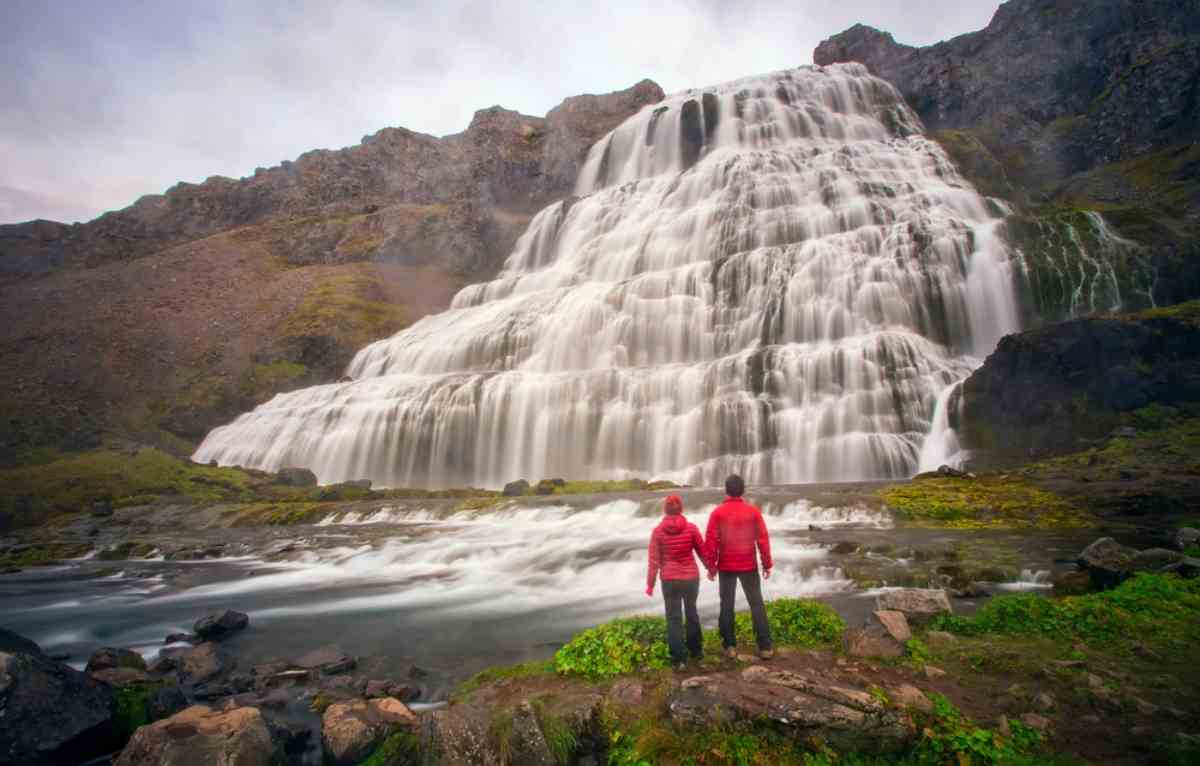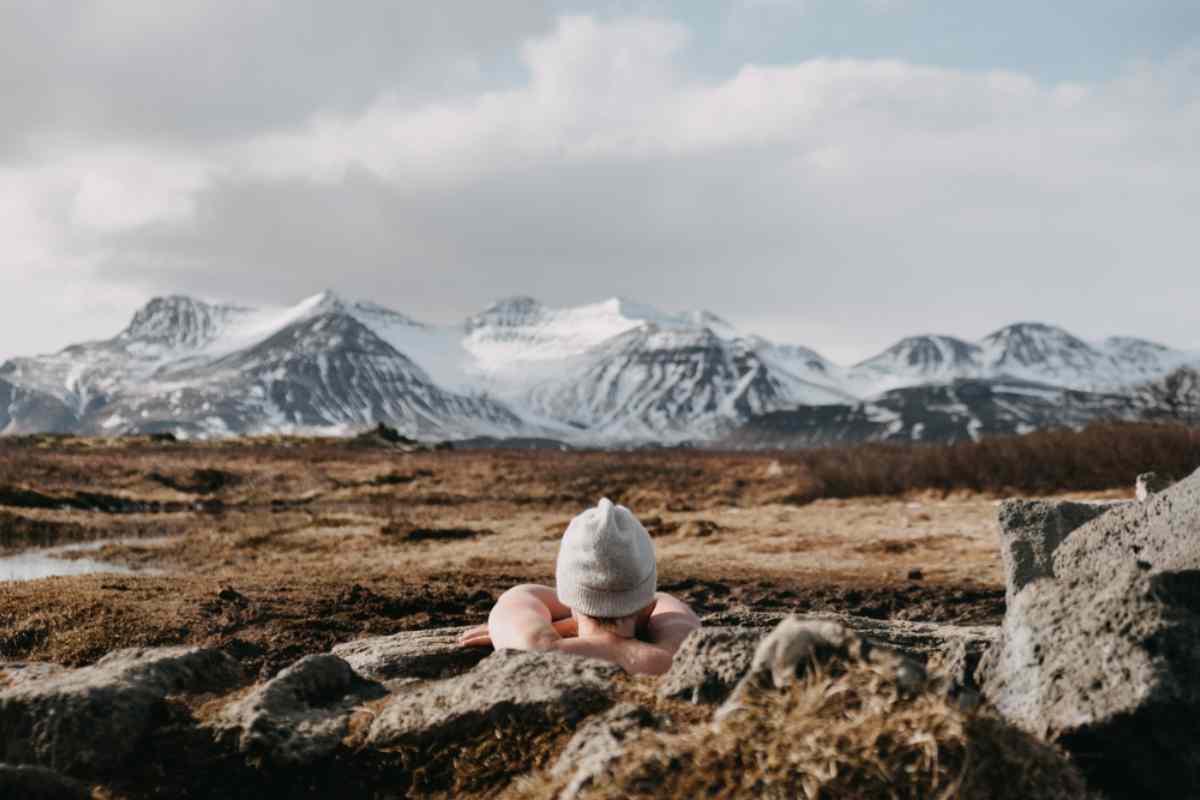Picture this: you're standing at the edge of Studlagil Canyon, a jaw-dropping basalt marvel. The cool breeze brushes against your face. You take in the breathtaking view of towering columns and crystal-clear waters that seem to flow like liquid glass.
It's a scene straight out of a fantasy novel, and you can't help but feel a surge of excitement. But hold on tight because we're just getting started! In this blog, we're diving deep into the wonders of Studlagil Canyon.
From its fascinating formation to the best hiking trails and how to reach this hidden gem, we've covered everything. So, buckle up and keep reading to unlock the secrets of Studlagil, Iceland!
What Is the History of Studlagil Canyon?
Nestled within the Icelandic landscapes lies the enchanting allure of Studlagil Canyon, a mesmerizing basalt wonder that bears witness to the unyielding power of nature. This majestic basalt canyon was sculpted when a mighty glacial river, spanning an impressive length of 150 km (90 mi), forced its way from the Highlands to the North of the island.
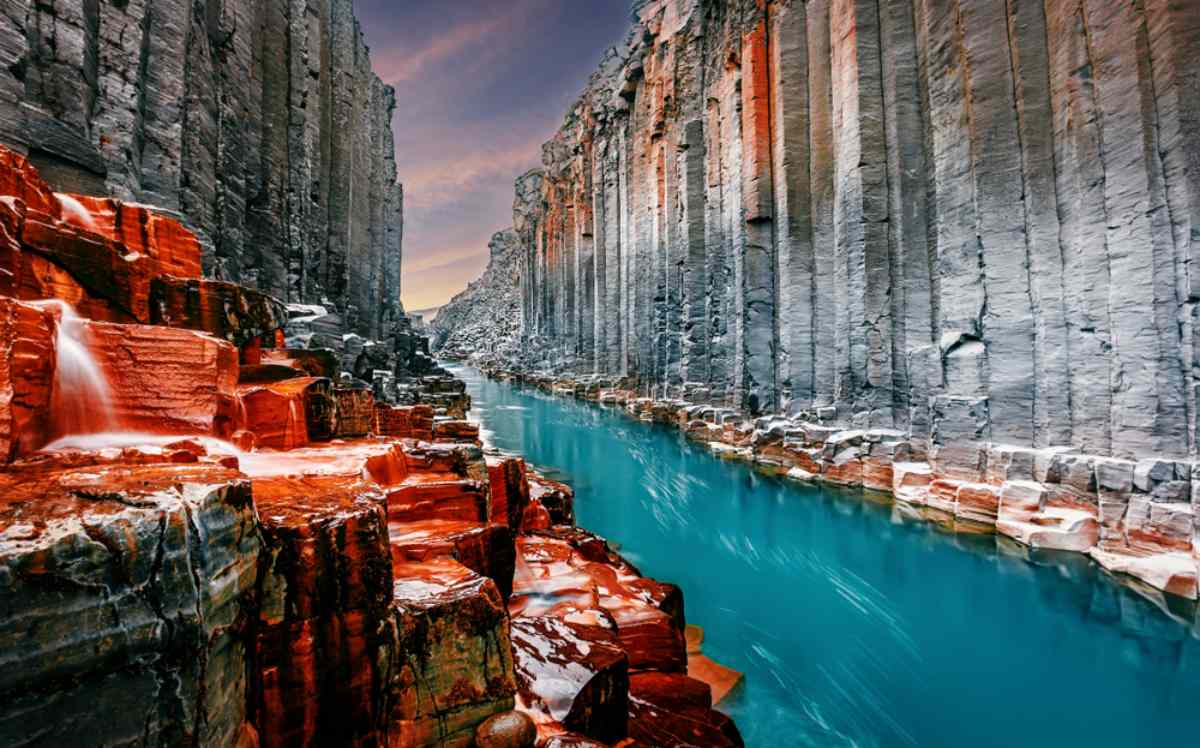
The powerful force of the river left behind a trail of breathtaking basalt columns and mesmerizing waterfalls, earning its rightful place among Iceland's natural wonders. However, the landscape of this natural masterpiece underwent a dramatic transformation with the introduction of the nearby hydroelectric plant, Karahnjukavirkjun, in 2007. As part of this ambitious industrial endeavor, the vast Hálslón reservoir came into being, forever altering the scenery.
By taming the river's power and supplying electricity to an aluminum plant in Reydarfjordur, the water level decreased by 7 to 8 meters (23 to 26 feet), and the once ferocious river was subdued. Now, with the waters calmed and the level reduced, the Studlagil basalt canyon emerges in all its glory, captivating the hearts of travelers and locals alike. Its raw natural beauty, etched in basalt formations, beckons adventurers to explore the wonders that time and nature have crafted.
What Is the Geology of Studlagil Canyon?
The canyon's geology is a result of the cooling process of still magma. As the magma cools, it undergoes contraction, causing it to separate into distinct columnar joints, often taking on hexagonal shapes. The formation of these joints begins where the cooling is most intense and continues as the magma further cools.
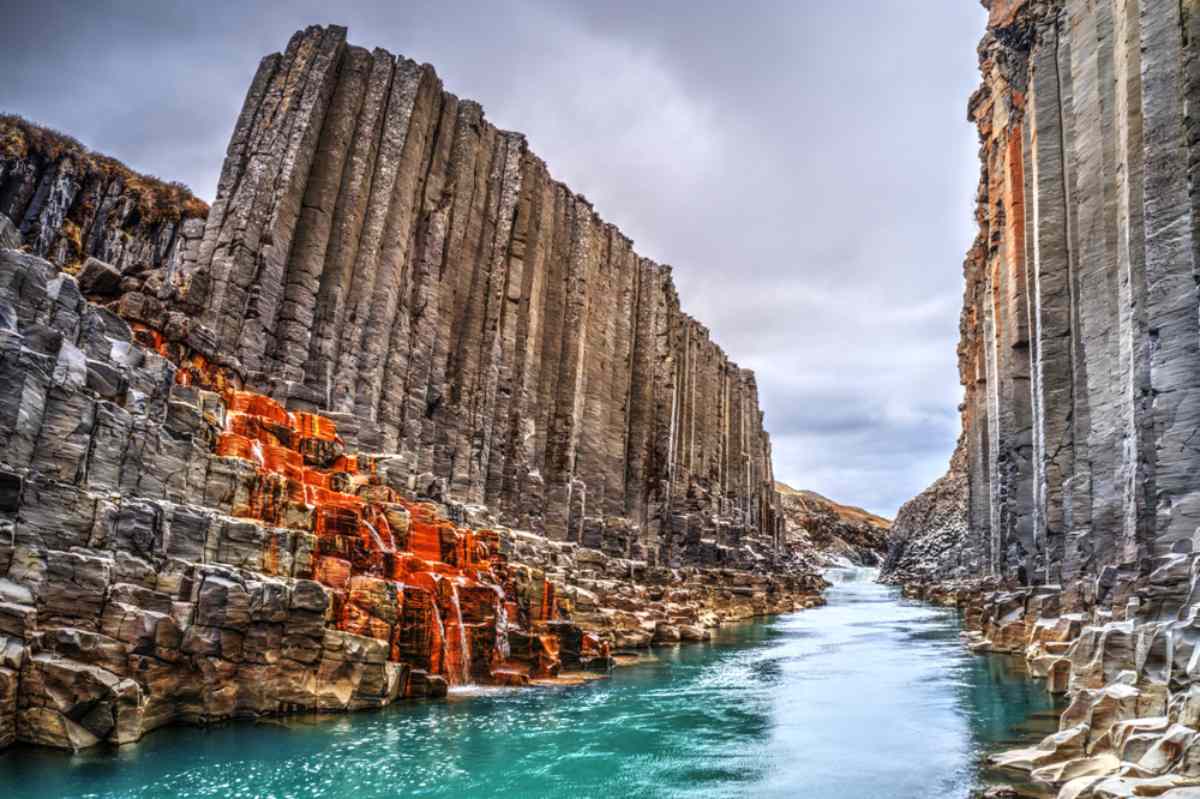
This vertical arrangement is observable on both the lava surface and the surface of diapirs within the canyon, adding to the unique geological character of Studlagil Canyon. This force created hexagonal-shaped columns of basalt rock that tower over a deep blue-green river.
The canyon has 20 to 30-meter (65-98 feet) high basalt columns on either side of the river. The color of the river changes with the seasons, from blue-green during summer to dark gray in winter. This giant basalt canyon in Iceland has become an unexpected tourist sensation since it was featured in a WOW air brochure in 2017. For this reason, it's a prime Instagram hot spot and is considered one of the top things to do in Iceland.
How Long Is the Hike to Studlagil Canyon?
The shortest hike at Studlagil in Iceland takes around 30 minutes. However, depending on your speed and the route you take, it could take up to 2 hours to explore the entire canyon.
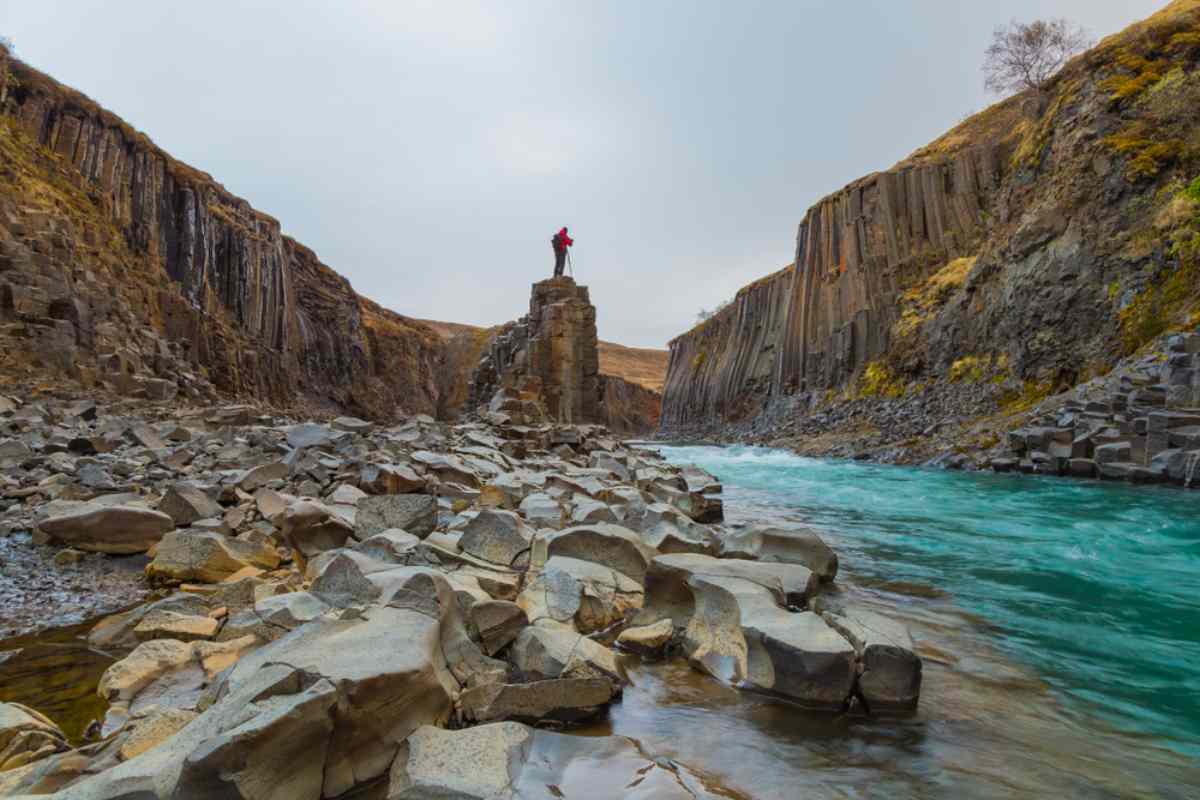
Here is a list of hiking trails you can take to explore this stunning canyon and its surroundings:
- Eiríksstaðahneflar (5-6 hrs): This trail starts from the Þverá river south of Eiríksstaðir farm and offers a two-for-one experience, as it takes you to the summits of both Fremri Hnefill and Ytri Hnefil. You can also explore the ruins of the abandoned Hneflasel farm on the way back.
- Hnjúksvatn (3 hrs): The trail leading to Hnjúksvatn Lake can be found across from Merki farm. The plateau around the lake has rounded cliffs and moors. There's a hut called Binnubúð along the trail, where you can take a break and enjoy the highlands.
- Magnahellir (0.5 hrs): To get to the magnificent Magnahellir canyon, drive north from Kárahnjúkastífla reservoir until you reach the parking area by Dimmugljúfur canyons. The canyon stretches for about 7-8 km (4-5 mi) from the northern part of the Vatnajökull icecap towards Jökuldalur Valley. Additionally, you can visit the Magnahellir cave, which is located around 1.5 km (0.9 mi) away from the parking area.
- Hvannárgil (4 hrs): This spectacular canyon cuts through the Möðrudalur mountain range. The trail takes approximately two hours to reach the innermost and most magnificent part of the canyon. You'll encounter beautiful rock formations and a gorge along the way. The highest creek in the canyon features an impressive waterfall.
- Grjótgarður at the farm Hjarðarhagi (2.5 hrs): To begin this hike, go to the crossroads to Hnefilsdalur. Follow the marked trail along the Sauðá River, passing a stone wall or fence. You'll then head towards Teigará and return through Hestagil Creek on a marked horse riding trail. Although it's unclear what the stone wall was used for, it's believed to have been a fence for farm animals.
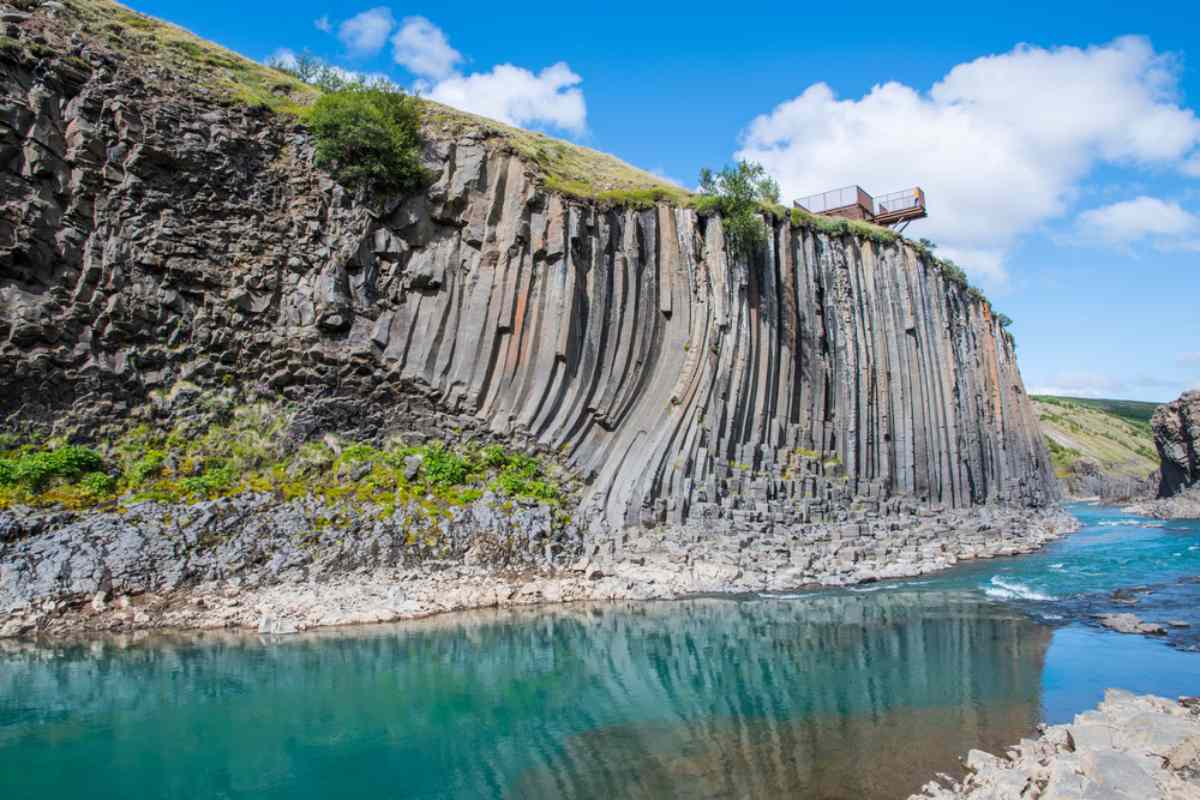
How Do You Get Studlagil Canyon?
Getting to Studlagil Canyon is fairly straightforward and easy. We recommend renting a car in Reykjavik and driving to the canyon on the Ring Road (Route 1) as there are no buses going there. Once you reach Egilsstaðir, turn off onto Road 923, which is close to Grun farm. From there, you'll have a five-minute walk along the river bank until you reach the canyon.
If you have a 4x4 vehicle, you can park even closer, but the short walk along the river bank is an enjoyable experience, with plenty of beautiful scenery. Be sure to watch your step as there are some steep slopes. Make sure you have the right clothes and shoes for this activity.
Can You Swim in Studlagil Canyon?
No, it is not recommended to swim in Studlagil Canyon, as the water is freezing, and the currents are quite strong. So for the love of Odin, please don't take a dip! However, you can admire the canyon from the safety of its banks and soak up the majestic views.
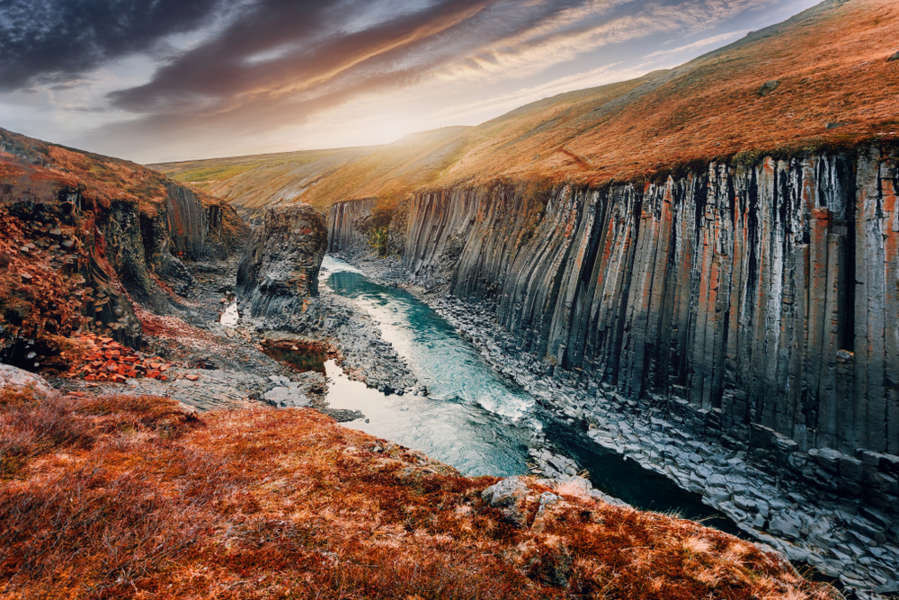
When Is The Best Time To Visit Studlagil Iceland?
July and August are the warmest months, making them the best time to visit the giant basalt canyon in Iceland. The summer months have long days and plenty of sunshine, giving you plenty of time to explore the area. Plus, you won't need to worry about snow or ice. But be sure to check our Iceland weather guide to get a better sense of what the seasons are like in Iceland.
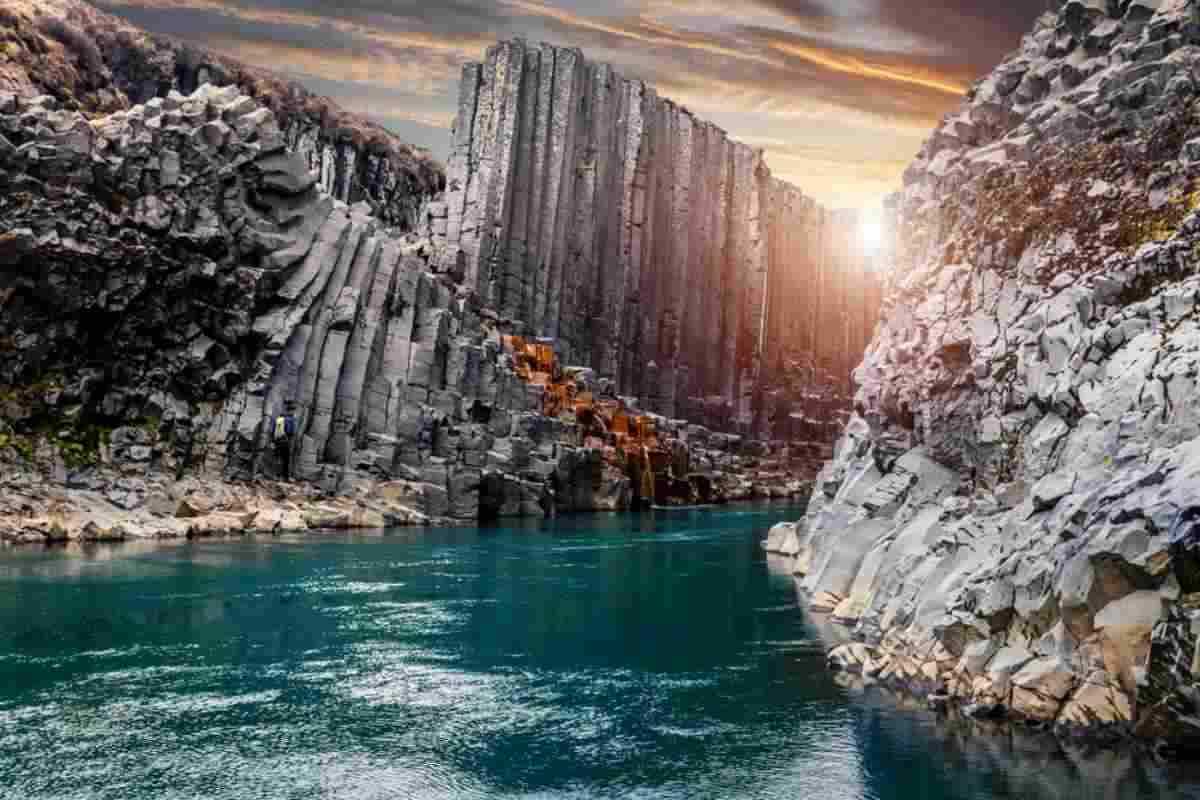
Where To Stay Near Studlagil Basalt Canyon?
If you want to stay close to Stuðlagil, Iceland, then we suggest one of the following lodging options.
- Studlagil Canyon Country Home: This cozy accommodation is situated close to the canyon, just outside of Egilsstadir. It offers a fully equipped kitchen and stylish bedrooms with great mountain views.
- Hotel Studlagil: This cozy guest house is located on the banks of the Studlagil River, just 23 minutes from the canyon. It offers simple yet comfortable rooms, plus a restaurant and bar. Laufskálar Guesthouse:
The Studlagil Canyon Awaits
The Studlagil basalt canyon is an incredible natural wonder with breathtaking views and stunning geological formations. Whether you're looking for a short hike or a longer adventure, the canyon offers something for everyone – from photographers to adventurers seeking new experiences. So, what are you waiting for? Put on your hiking shoes and explore this one-of-a-kind gem!

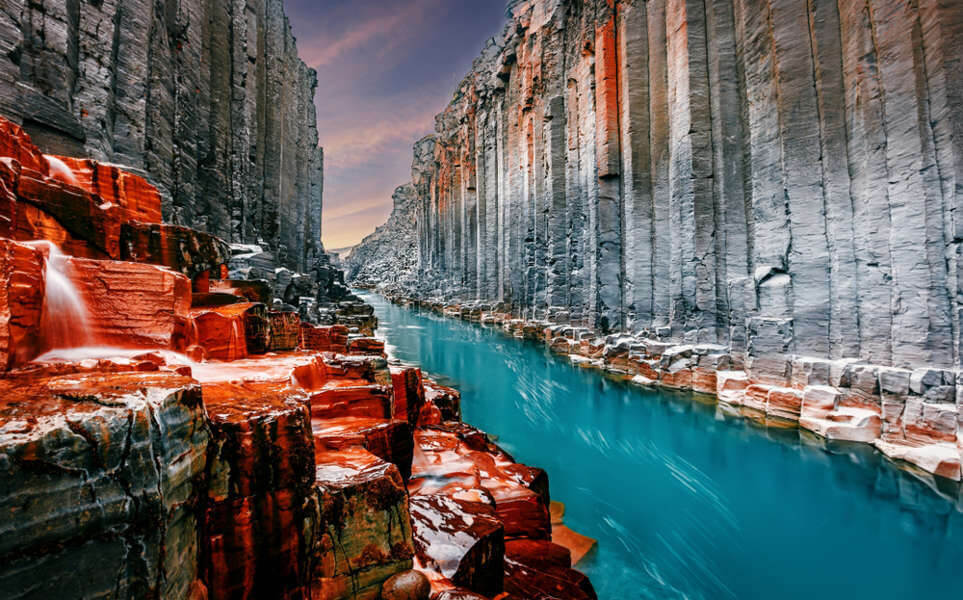
 By
By
